In November 21~22, 2022, the 3rd International Symposium on Jointless & Sustainable Bridges(ISJSB) was successfully held in Fuzhou. The Symposium was co-sponsored by International Association of Jointless Bridges (IAJB) and Fujian University of Technology. It was sponsored by Shenzhen Geokey Group Co. Ltd., and co-organized by Fuzhou University and Bridge Magazine. The supporting organizations included the International Association of Bridge Earthquake Engineering, Asian Concrete Federation, Committee of Sustainable Civil Engineering, China Urban Science Research Institute, Bridge and Structural Engineering Branch, China Civil, Bridge and Structural Engineering Branch, China Highway Society, Journal of Traffic and Transportation Engineering, Fujian Highway and Transportation Society, China.
The opening ceremony was held in the morning of Nov. 21st and hosted by prof. Wei Jiangang from Fujian University of Technology (Fig.1). The distinguished guests, prof. Tong Xin, President of Fujian University of Technology, prof. Yang Yongbin, Academician of Chinese Academy of Engineering, prof. Chen Baochun, Vice President of International Association of Jointless Bridge, Dr. Bijan Khaleghi, President of International Association of Bridge Earthquake Engineering, prof. Donguk Choi, President of Asian Concrete Federation, and prof. Chen Yiyan, National engineering survey and design Master, delivered a speech respectively (Fig.2~6).

Fig.1 Ceremony from Prof. Wei Jiangang

Fig.2 Ceremony from Prof. Yang Yongbin

Fig.3 Ceremony from Prof. Choi

Fig.4 Ceremony from Prof. Bijan Khaleghi
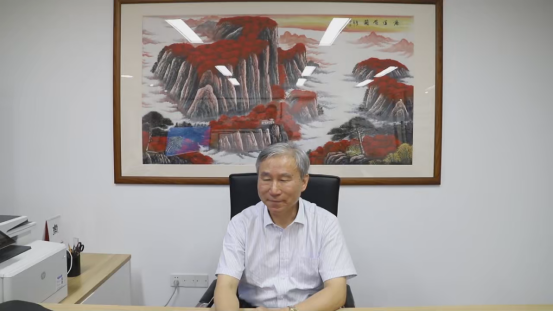
Fig.5 Ceremony from Prof. Chen Yiyan
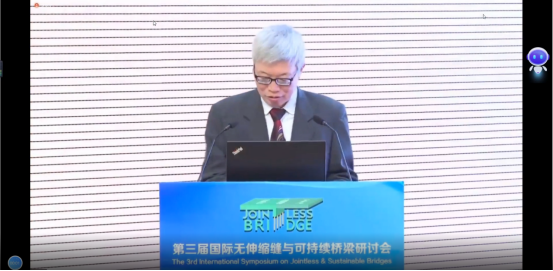
Fig.6 Ceremony from Prof. Chen Baochun
After the opening ceremony, Professor Chen Baochun from Fujian University of Technology introduced in detail the research and application of new technologies such as new materials, new structures and new construction processes in jointless bridges (Fig.7). Then, Professor Zlatko Savor, University of Zagreb (Croatia), introduced the integral bridges design practice worldwide, while Professor Anastasios Sextos, the University of Bristol (UK) analyzed the advantages of the seamless bridge compared to the traditional bridge typology through a practical case study and explaining its limitations and inherent problems (Fig.8~9).
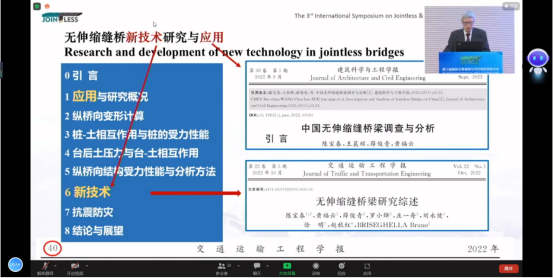
Fig.7 Prof. Chen Baochun

Fig.8 Prof. Zlatko Savor

Fig.9 Prof. Anastasios Sextos
In the afternoon of Nov. 21st, Professor Yen Lei Voo, the director and president of Malaysia Dura Technology Co. Ltd. and Professor Huang Fuyun from Fuzhou University introduced the practical application of seamless bridge in Malaysia, China and German-speaking areas respectively (Fig.10~11). Professor Yen Lei Voo analyzed and introduced some case studies of ultra-high performance concrete bridges explaining the characteristics, design parameters, upper and lower structure. Starting from a typical case, Professor Huang Fuyun introduced 9 Bridges constructed and repaired using the seamless technology. Prof. Zhao Qiuhong from Tianjin University, Prof. Murat Dicleli from Middle East Technical University in Turkey, Prof. Zhuang Yizhou from Zhejiang University of Technology introduced the experimental research on seismic performance, mechanical behavior and fatigue of integral abutment bridges, as well as the related research results(Fig.12~14). Professor Chao Xu of Tongji University and Professor Saiid Saiidi, Emeritus Professor of University of Nevada, Reno, (USA) introduced the application of a new generation of iron-based shape memory alloy in seismic resistance of bridges and the development of geosynthetic-reinforced earth abut-monolithic bridge composite structures in China(Fig.15~16).
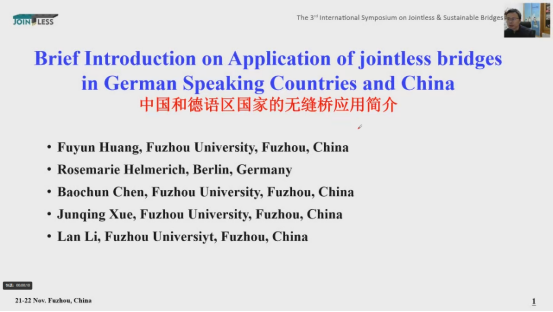
Fig.10 Prof. Huang Fuyun
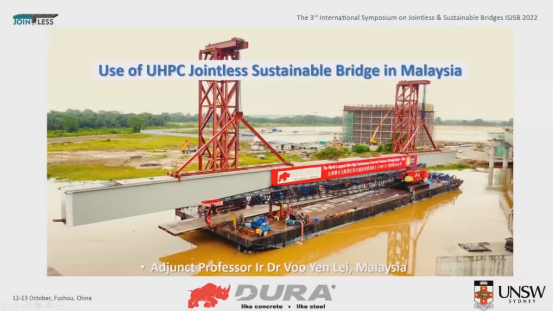
Fig.11 Dr. Voo Yen Lei
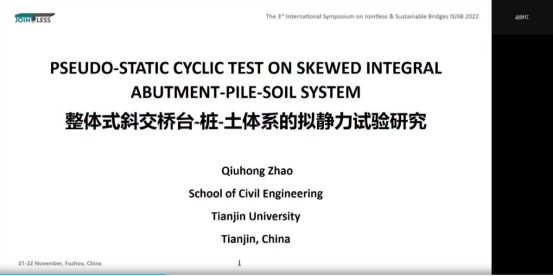
Fig.12 Prof. Zhao Qiuhong

Fig.13 Prof. Murat Dicleli
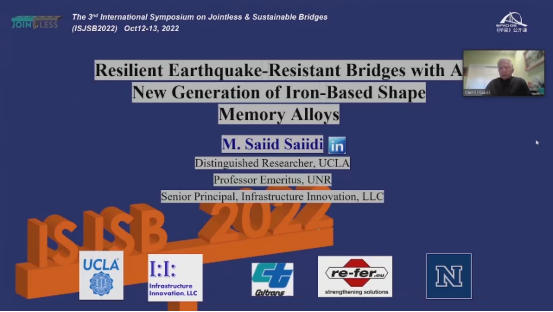
Fig.14 Prof. Saiid Saiidi

Fig.15 Prof. Zhuang Yizhou

Fig.16 Prof. Xu Chao
In the morning of Nov. 22nd, Krishna Shrestha, adjunct Associate Professor of Fuzhou University and Chartered Engineer of Civil and Structural Engineering in Australia, Professor Tamon UEDA of Shenzhen University, Professor Xiao Jianzhuang of Tongji University and Professor Wang Yuanfeng of Beijing Jiaotong University focused on the important topic of sustainable bridges. Dr. Shrestha introduced the sustainable development technology of Australian bridge and the theory, method and technology of how to achieve carbon neutrality of concrete structure. Professor Xu Ming from Tsinghua University, Professor Zheng Changjie from Fujian University of Technology and Professor Dong-uk CHOI from Hankyung National University of Korea have conducted scientific and rigorous experimental research on sand pressure behind integrated abutments, pile-soil interaction and recycled aggregate concrete, and introduced the analysis theory, process and research results(Fig.17~21).
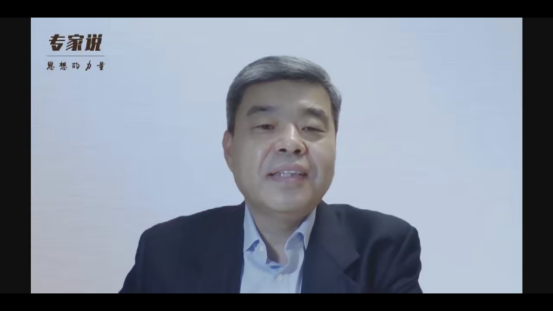
Fig.17 Prof. Wang Yuanfeng

Fig.18 Prof. Ueda Tamon
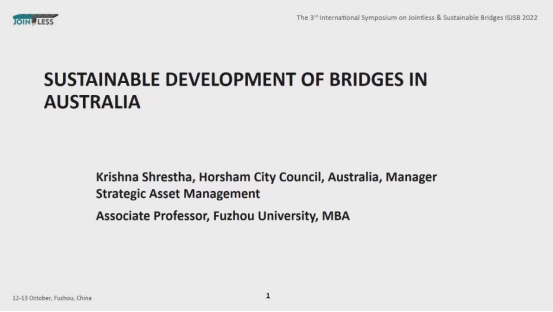
Fig.19 Dr. Krishna Shrestha

Fig.20 Prof. Xu Ming

Fig.21 Prof.Zheng Changjie
Professor Khaled Sennah from Toronto Metropolitan University in Canada, Professor Camillo Nuti from Rome Tre University in Italy, and Professor Camillo Nuti from Fuzhou University shared their methods on improving structural durability and earthquake resistance in the afternoon of Nov. 22nd (Fig.22-24). Liu Yongjian, professor of Chang 'an University, shared his analysis model of the extreme value of the temperature action value over the threshold, as well as the contour map of the temperature action value of the composite girder bridge in China.
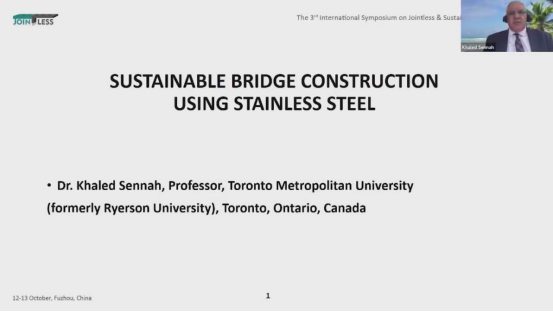
Fig.22 Prof. Khaled Sennah

Fig.23 Prof. Camillo Nuti

Fig.24 Prof. Liu Yongjian
The closing ceremony, chaired by Professor Wu Chen from Fujian University of Technology, was held after all the special presentations (Fig.25). Professor Wei Jiangang delivered the closing speech. Professor Chen Baochun announced the new Executive Committee members. Professor Bruno Briseghella gave his welcoming address as newly elected Chair of the International Association of Jointless Bridges and made plans for future work(Fig.26). Prof. Habib Tabatabai, Chair of the Organizing Committee of the 4th International Symposium on Jointless & Sustainable Bridges, announced that the next ISJSB-2025 will be held in Milwaukee, Wisconsin, USA(Fig.27).
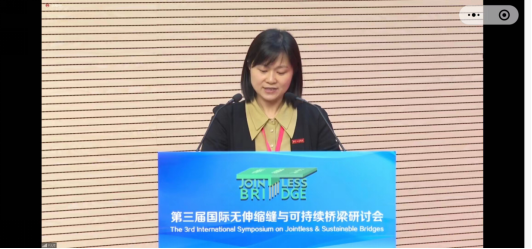
Fig.25 Prof. Wu Chen

Fig.26 Prof.Bruno Briseghella
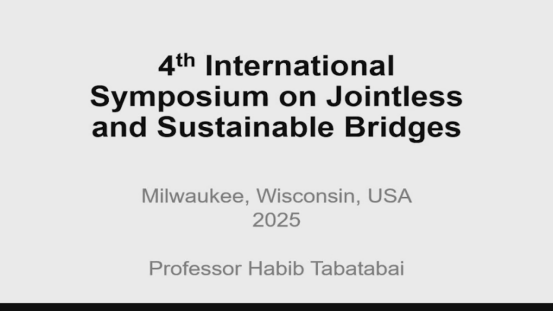
Fig.27 the 4th International Symposium on Jointless & Sustainable Bridge
On the evening of 22nd, an online Salon and a Q&A session were organized, coordinated by Professor Huang Fuyun from Fuzhou University(Fig.28). In the Salon, the latest research results, practical engineering application and technical difficulties in design and construction of jointless and sustainable bridge were extensively exchanged and discussed. The experts and professors also answered in detail to the audience's questions on the presentations given in the Symposium.

Fig.28 Salon
After two days of intensive and fruitful work and discussion, the conference completed all the scheduled agenda and achieved a complete success. We wish that with the help of the exchange and discussion made in the international jointless and sustainable bridge seminars, the world bridge community can help to promote the application and promotion of jointless bridges in China, and lead the jointless bridge technology towards the international advanced level.